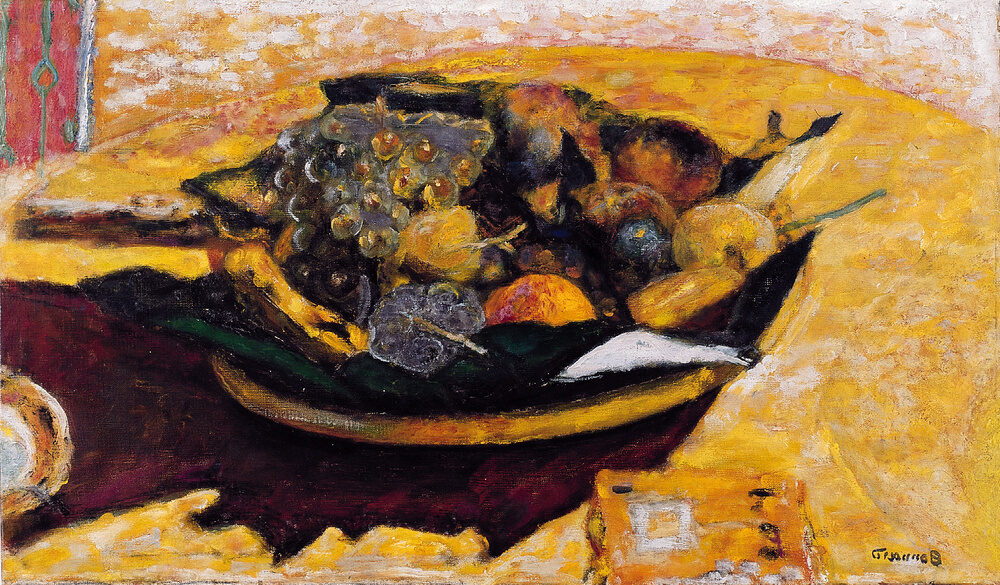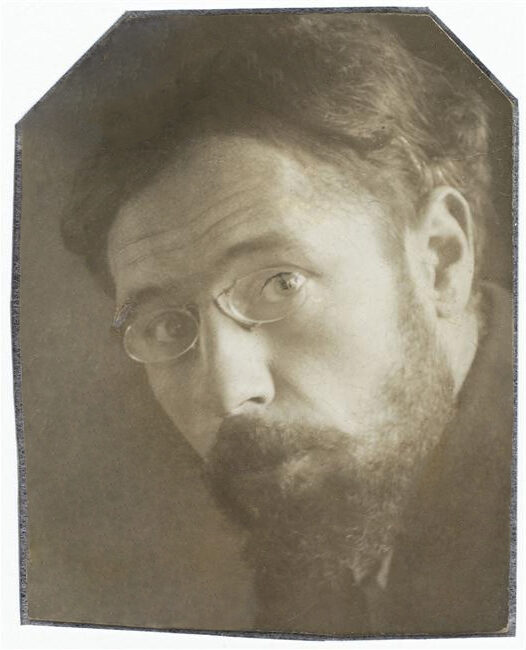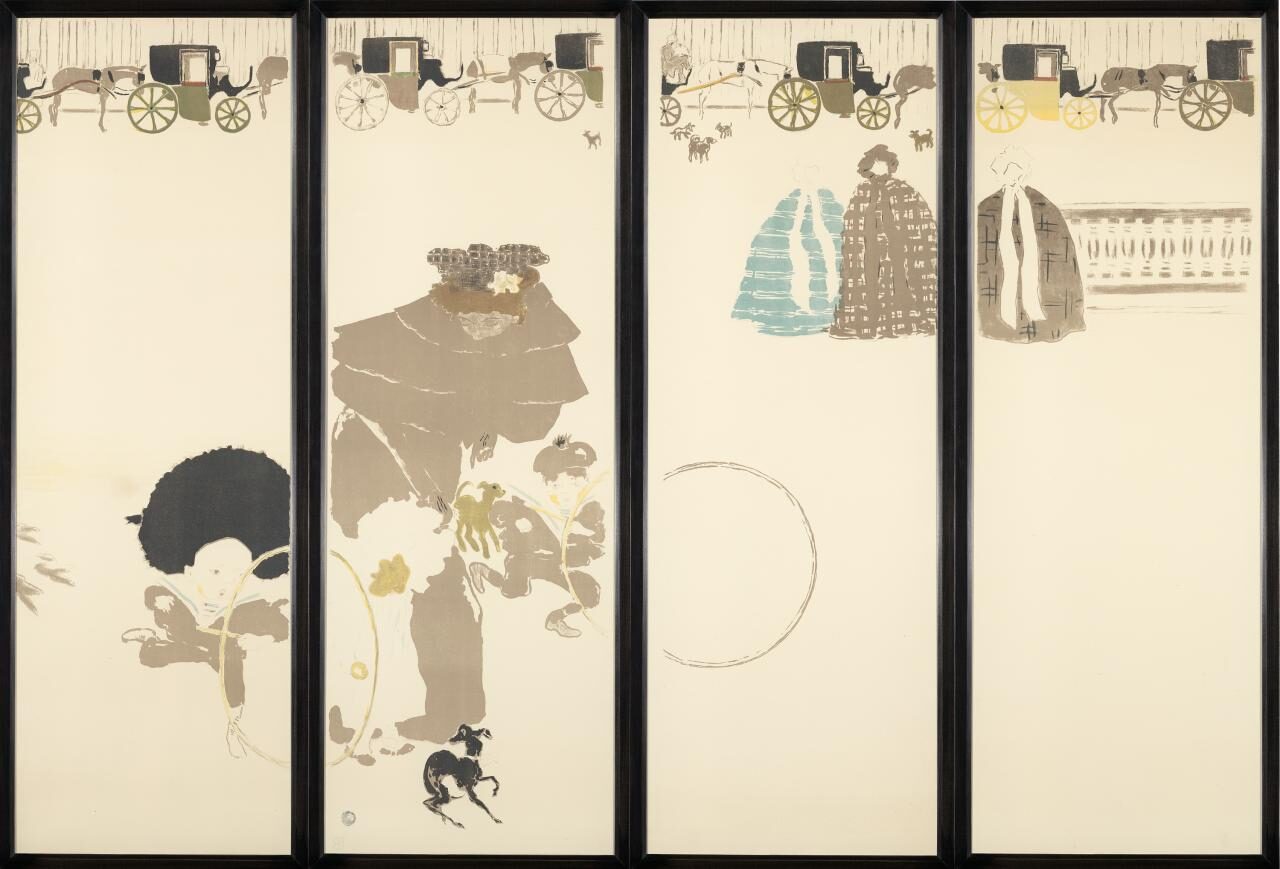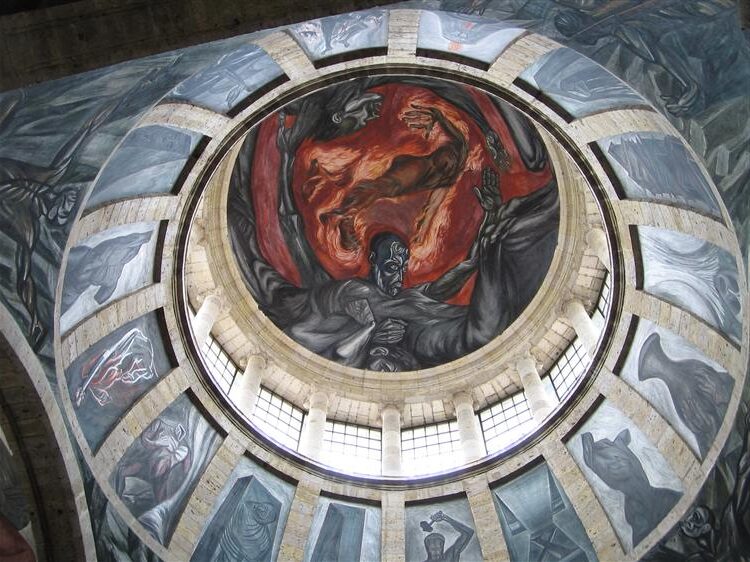Bonnard Paintings: Exploring the Vibrant World of Modern Impressionism
Born: October 3, 1867, Hauts-de-Seine, France
Death: January 23, 1947, French Riviera, France
Art Movement: Post-Impressionism
Nationality: French
Influenced By: Michel Kikoine, Richard Diebenkorn
Institution: Académie Julian, Paris, France, École des Beaux-Arts, Paris, France
Bonnard Paintings: Exploring the Vibrant World of Modern Impressionism
Pierre Bonnard: Life and Legacy
Pierre Bonnard was a pivotal figure in the post-impressionist movement, blending vibrant color with elements of everyday life. His early training at Académie Julian and close relationship with Marthe de Méligny played significant roles in shaping his work.
Major exhibitions at renowned institutions like the Musée d’Orsay and the Museum of Modern Art highlight his lasting impact.
Early Life and Académie Julian
Pierre Bonnard was born in France in 1867. He showed an early interest in art, majoring in law initially before diverting to pursue his true passion.
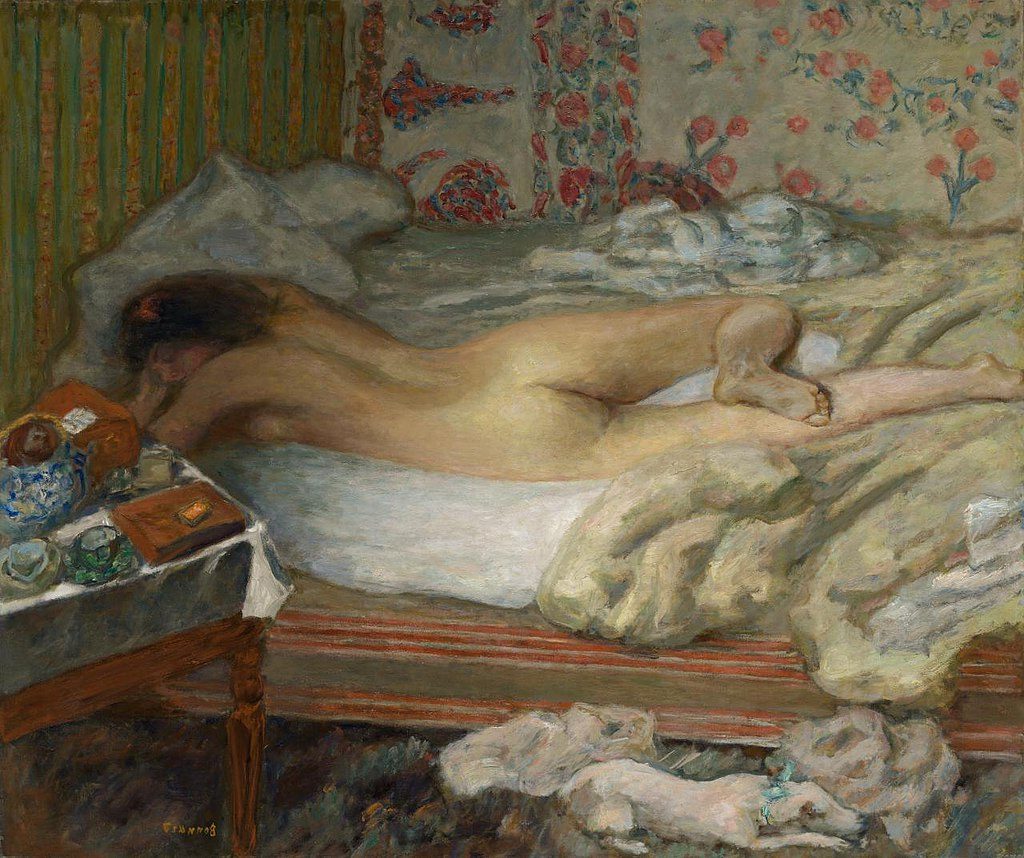
Siesta (1900) by Pierre Bonnard
He enrolled at Académie Julian, a prestigious art school in Paris. Here, Bonnard met other avant-garde artists and joined the group Les Nabis.
This group encouraged its members to reject traditional techniques in favor of modern expression.
His time at the Académie Julian laid the groundwork for his future as one of the leading figures in post-impressionism. The influences he gained during this period can be seen in his vibrant use of color and detail.
Marthe and Personal Influences
Marthe de Méligny, who was Bonnard’s lifelong companion, played a crucial role in his art. She frequently appeared in his paintings, influencing them with her presence.
Bonnard’s personal life deeply impacted his work, blending autobiographical elements into many of his pieces. His depictions often involved intimate domestic scenes, reflecting their time spent together.
Marthe’s influence is evident in Bonnard’s repeated choice of everyday settings, using her as a muse to explore color, light, and personal comfort. These themes were consistent throughout his career and are celebrated for their emotional depth.
Legacy and Major Exhibitions
Pierre Bonnard left an indelible mark on the art world. His legacy is celebrated through numerous exhibitions in major museums around the world.

At the Fence (1895) by Pierre Bonnard
His work has been featured at places like The Met, Musée d’Orsay, Tate Gallery, Hermitage Museum, and the Museum of Modern Art. These prestigious venues have showcased the depth and diversity of his contributions.
Bonnard’s paintings continue to captivate audiences, appreciated for their bold colors and intimate reflections on everyday life. His influence remains vital in understanding the progression from impressionism to modern art movements.
Artistic Evolution and Movements
Pierre Bonnard played a crucial role in the transition from Post-Impressionism to modern art, marked by vibrant color use and the influence of Japanese art. His journey through different artistic movements shaped his unique style and contributed significantly to modern art.
Nabis Group and Les Nabis
Bonnard was a founding member of the Nabis group, a circle of artists called the “prophets.” This avant-garde group focused on symbolism, rejecting traditional perspectives in art. They preferred flat areas of color over detailed three-dimensional modeling.

Parisian Boulevard (1896) by Pierre Bonnard
Bonnard’s association with Les Nabis influenced his artistic development. He embraced their emphasis on emotion and color.
Les Nabis sought to break from traditional techniques that dominated at the time. They drew inspiration from areas like Impressionism and Art Nouveau. While Bonnard was part of this movement, he was not fully aligned with all their ideas. He retained a distinctive style, which found more inspiration in his personal experiences, moving away from pure symbolism.
Journey to Modernism
Bonnard’s later works reflect a progression towards modernism. His early paintings were influenced by Paul Gauguin and other Post-Impressionist artists.
However, as he developed his style, Bonnard sought to capture moments in time through color and light. He used these elements to evoke emotion, creating a unique narrative.
This shift towards modernism involved an exploration of everyday scenes, moving away from the mystical or mythological themes favored by Les Nabis.
Bonnard’s color palette became more vibrant, and his compositions grew more complex. He painted not just what he saw, but how he remembered it, making memory a key element in his artistic approach.
Influence of Japanese Prints
Japanese prints deeply influenced Bonnard’s work. He admired the simplicity and flatness found in Japanese art, integrating these aspects into his style.
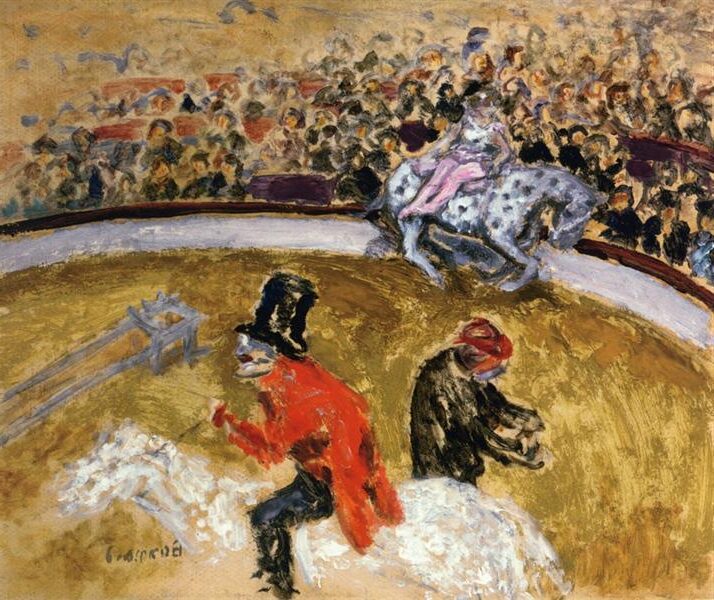
At the Circus (1897) by Pierre Bonnard
The use of bold outlines and vibrant colors in ukiyo-e prints can be seen in his compositions. This exposure to Japanese art came during his time at the École des Beaux-Arts in Paris.
Bonnard adopted the Japanese approach of incorporating patterns and decorative elements. This was evident in his compositions where he sometimes eschewed traditional Western perspectives.
He embraced these design principles, which helped set the tone for his later works and contributed to the evolution of modern art movements, placing importance on memory and emotion in his pieces.
Themes and Techniques in Bonnard’s Work
Pierre Bonnard, a notable French painter and printmaker, was celebrated for his unique approach to capturing everyday life. His rich use of color and distinctive methods positioned him prominently in the world of art. The following explores how he infuses themes of intimacy, self-expression, and light into his paintings.
Intimist Scenes and the Intimate Domestic
Bonnard was a key figure in the Intimist movement, which captured the serene and personal moments of domestic life. His paintings often depict everyday scenes inside homes, offering a look into intimate moments.
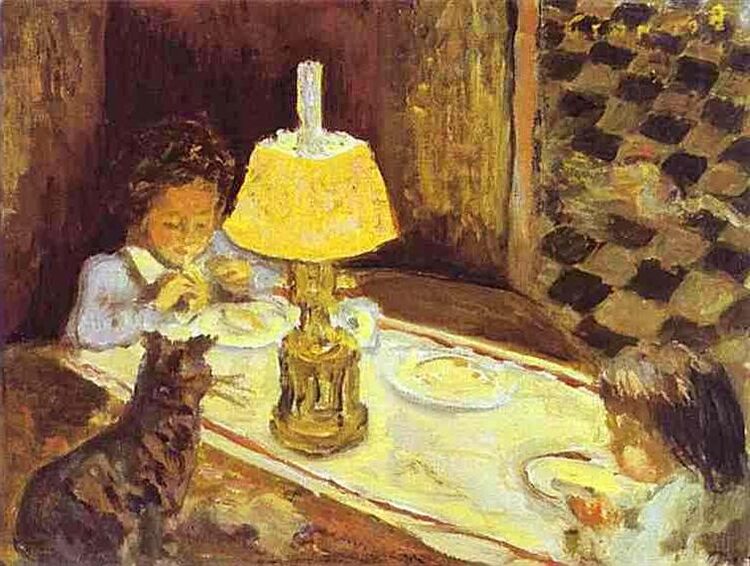
The Lunch of the Little Ones (c.1897) by Pierre Bonnard
He used vibrant colors to highlight ordinary objects and individuals, turning the mundane into the extraordinary.
These domestic scenes frequently feature family members in relaxed settings. Bonnard’s choice of oil on canvas allowed him to experiment with texture and depth.
His works emphasize light and shadow, bringing warmth and emotion to the forefront of his paintings. By focusing on intimate spaces, Bonnard transformed private moments into universal explorations of human experience.
Portraiture and Self-Expression
Portraiture played a significant role in Bonnard’s work, where self-expression was a key focus. He produced both self-portraits and portraits of those close to him, like his wife Marthe.
Through these portraits, his use of color and detail conveyed deep emotions and moods.
Bonnard’s self-portraits were a means of personal exploration, capturing his presence with sincerity and insight. He often depicted scenes that mirrored his thoughts and feelings, offering a glimpse into his introspective nature.
Bonnard’s technique combined bright color palettes and thoughtful composition to show emotional complexity and personality.
Landscape and Light Exploration
Bonnard’s landscapes reveal his fascination with color and light, something he masterfully captured through his unique technique. His paintings of landscapes, especially around Le Cannet, were filled with lush colors and dynamic shadows.
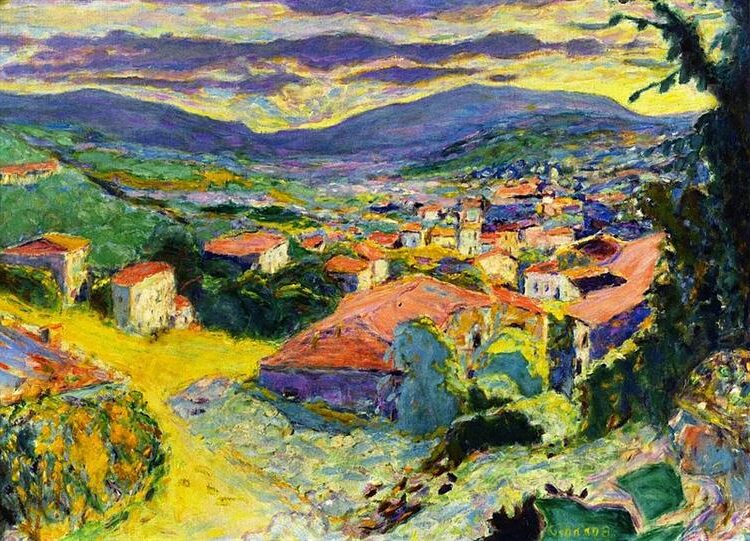
Landscape at Le Cannet (c.1938) by Pierre Bonnard
He was not interested in precise detail but rather in the overall atmosphere. This approach resulted in vibrant interpretations of nature and surroundings.
By painting with emotive color variations and playing with perspectives, Bonnard brought his landscapes to life, allowing viewers to almost feel the air and light within the scenes. His landscapes reflect an ongoing conversation between the visible world and his personal vision.
Signature Styles and Artistic Methods
Pierre Bonnard is known for his innovative use of color and unique artistic methods, making him a standout figure in modern art. His work is characterized by bold colors, interesting compositions, and a mastery of lithography and illustration techniques.
Color Mastery and Bold Choices
Bonnard was renowned for his exceptional use of color, often employing vibrant and unexpected hues to create stunning visual effects. His pieces are celebrated for their bold color choices, which filled his canvases with energy and emotion.

Children Playing in a Garden (1899) by Pierre Bonnard
This boldness in color set him apart from his contemporaries. His approach often leaned toward abstraction, where colors didn’t just follow the rules of realism but served to enhance the mood and message of the artwork.
Composition and Spatial Arrangements
Bonnard had a strong sense of composition, often structuring his works in a way that felt both dynamic and intimate.
Instead of relying on traditional perspectives, he embraced flattened spatial arrangements, which were influenced by his time with Les Nabis. He favored stylized decorative qualities, emphasizing flat planes and patterns over realism.
This technique created a sense of depth and movement within the apparent simplicity, guiding the viewer’s eye through the scene in a deliberate manner.
Lithography and Illustration
His skills were not limited to painting; Bonnard also excelled as a lithographer and illustrator.

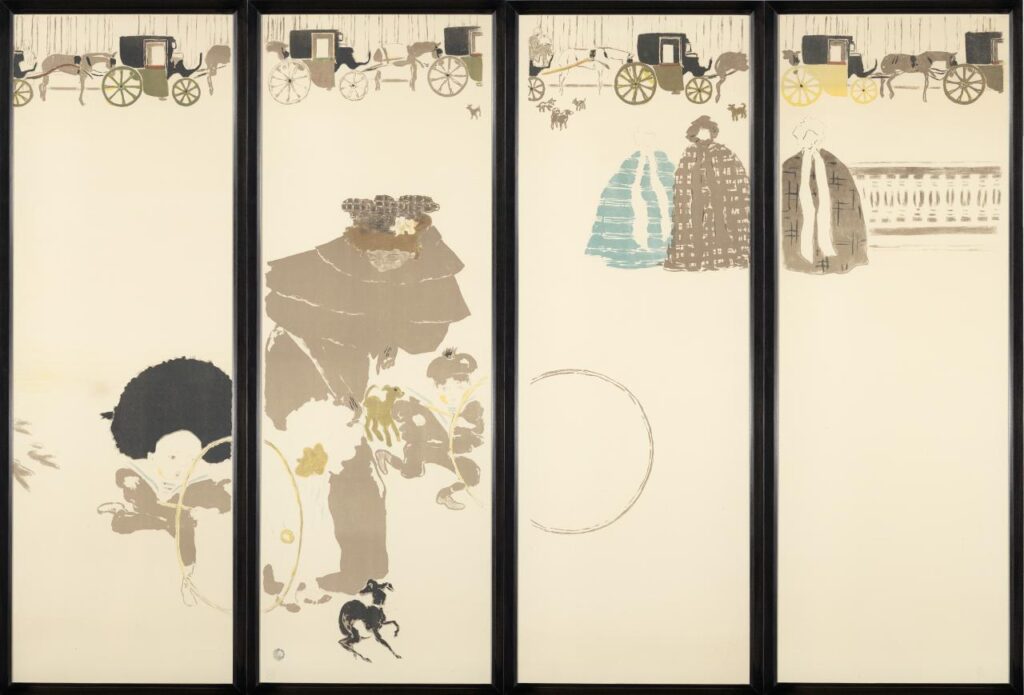
He was an innovative lithograph artist, using this medium to explore different textures and lines. His illustrations were noted for their light touch and delicate details, which contrasted with the boldness of his paintings.
His work in lithography was critical in allowing him to experiment with color and form, contributing significantly to his overall artistic development.
Frequently Asked Questions
Pierre Bonnard’s work is admired for its vibrant use of color and intimate portrayal of everyday life. His role in the Post-Impressionist movement is significant, and his artistic techniques are distinct and influential.
How do I identify an original Pierre Bonnard painting?
Identifying an original Bonnard painting requires attention to its provenance, style, and execution. Look for the use of bright, vibrant colors characteristic of Bonnard.
Authenticity can often be validated by art experts or institutions that specialize in his oeuvre.
What are the distinguishing characteristics of Bonnard’s use of color?
Bonnard is known for using rich, vivid colors to bring his scenes to life. He often layered colors to create depth, making ordinary scenes feel warm and inviting.
His use of color was both expressive and emotionally charged, setting him apart from his contemporaries.
Can you explain Pierre Bonnard’s painting techniques?
Bonnard often worked from memory, allowing his compositions to be more imaginative. He used loose brushwork and often employed a technique of layering colors to convey the complexity of light and shadow.
This approach helped create a unique atmosphere in his paintings.
What is considered Pierre Bonnard’s most famous work?
“Marthe in the Tub” is often mentioned as one of Bonnard’s iconic works. This piece exemplifies his talent in capturing intimate, personal moments with his bold use of color and intricate compositional techniques.
How has Pierre Bonnard contributed to the Post-Impressionist movement?
Bonnard was a member of the Nabis group, which played a pivotal role in advancing Post-Impressionism. He contributed through his vibrant color palettes and innovative techniques that emphasized emotion and atmosphere over realism.
What are the typical themes found in Bonnard’s artworks?
Bonnard frequently depicted domestic interiors, landscapes, and intimate family moments. His works often revolved around themes of everyday life. They embody a personal and reflective quality that highlights simple beauty and emotional depth.

